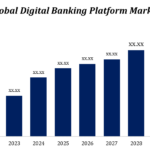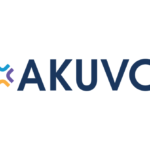The Potential of Biometric Payments Beyond Fingerprints: Voice, Face, and Retina
Biometric authentication is rapidly gaining traction as a secure and convenient method for verifying identities in various domains. While fingerprint recognition has been the most widely adopted biometric payment method, the technology is evolving, expanding into other biometric modalities such as voice, face, and retina recognition. Each of these technologies offers unique advantages and challenges, promising to enhance security and user experience in the payments landscape. In this blog, we’ll explore the potential of biometric payments beyond fingerprints, focusing on voice, face, and retina recognition.
1. Voice Recognition
How It Works
Voice recognition, or speaker recognition, involves analyzing a person’s voice characteristics to verify their identity. This technology uses algorithms to capture and analyze unique vocal features, such as pitch, tone, and speech patterns. It can be employed in two main forms: voice authentication, which identifies the speaker, and voice verification, which confirms the speaker’s claimed identity.
Potential Benefits
- Hands-Free Convenience: Voice recognition enables users to authenticate their identity without needing to touch or interact with physical devices. This can be particularly useful in environments where hands-free interaction is preferred or necessary.
- Accessibility: Voice recognition can offer a more inclusive solution for individuals with physical disabilities that may make traditional biometric methods challenging.
- Natural Interaction: Using voice for authentication can create a more seamless and intuitive user experience, integrating naturally into interactions with smart assistants and other voice-activated systems.
Challenges
- Background Noise: Voice recognition systems may struggle to function effectively in noisy environments where background noise can interfere with voice quality.
- Voice Mimicry: Sophisticated attackers could potentially mimic or clone voices, posing a risk to security.
- Privacy Concerns: Storing and processing voice data raises privacy concerns, especially regarding data breaches and misuse.
2. Face Recognition
How It Works
Face recognition technology identifies or verifies individuals based on their facial features. It uses cameras and advanced algorithms to capture and analyze facial attributes such as the distance between eyes, nose shape, and jawline. Modern systems use deep learning to enhance accuracy and resilience against spoofing attempts.
Potential Benefits
- Ease of Use: Face recognition provides a non-intrusive and user-friendly authentication method, allowing users to verify their identity simply by looking at a camera.
- Integration with Existing Devices: Many smartphones and laptops already feature face recognition technology, facilitating its adoption for payment authentication.
- Enhanced Security: Advanced facial recognition systems incorporate liveness detection to distinguish between real faces and photos or masks, improving security.
Challenges
- Lighting and Angles: Face recognition systems can be affected by lighting conditions and facial angles, potentially impacting accuracy.
- Privacy Issues: The collection and storage of facial data raise significant privacy and data protection concerns. Misuse or unauthorized access to this data can lead to serious security breaches.
- Ethical Concerns: The use of face recognition technology for surveillance and tracking has sparked debates about civil liberties and privacy rights.
3. Retina Recognition
How It Works
Retina recognition involves analyzing the unique patterns of blood vessels in the retina at the back of the eye. This biometric method requires users to look into a specialized camera that captures detailed images of the retina’s vascular patterns. Retina patterns are unique to each individual and remain stable throughout life.
Potential Benefits
- High Accuracy: Retina recognition is one of the most accurate biometric methods due to the uniqueness and stability of retinal patterns. It offers a high level of security and low false acceptance rates.
- Difficult to Spoof: The complexity and internal location of retinal patterns make them difficult to replicate or spoof, enhancing security.
Challenges
- User Experience: The need for users to look into a specialized device may make retina recognition less convenient compared to other biometric methods.
- Cost and Infrastructure: Implementing retina recognition requires specialized hardware and infrastructure, which can be costly.
- Health and Accessibility: The technology might not be suitable for individuals with certain eye conditions or disabilities, limiting its applicability.
Comparative Analysis
Security
- Voice: While convenient, voice recognition may be vulnerable to voice imitation and environmental noise. Security enhancements are needed to address these vulnerabilities.
- Face: Modern face recognition systems include anti-spoofing measures, but they must manage privacy and accuracy challenges.
- Retina: Retina recognition offers high accuracy and security but faces practical implementation challenges and higher costs.
User Experience
- Voice: Provides a natural, hands-free experience but may struggle with noise and voice mimicry issues.
- Face: Easy to use and integrates well with existing devices, though it requires good lighting and can raise privacy concerns.
- Retina: Highly secure and accurate but less convenient due to the need for specialized equipment and user positioning.
The Future of Biometric Payments
The future of biometric payments is likely to be characterized by increased integration and hybrid approaches that combine multiple biometric modalities for enhanced security and user experience. Innovations in biometric technology will continue to focus on improving accuracy, minimizing user inconvenience, and addressing privacy concerns. As these technologies mature, they will play a crucial role in shaping the next generation of payment systems, offering users a seamless, secure, and personalized payment experience.


































